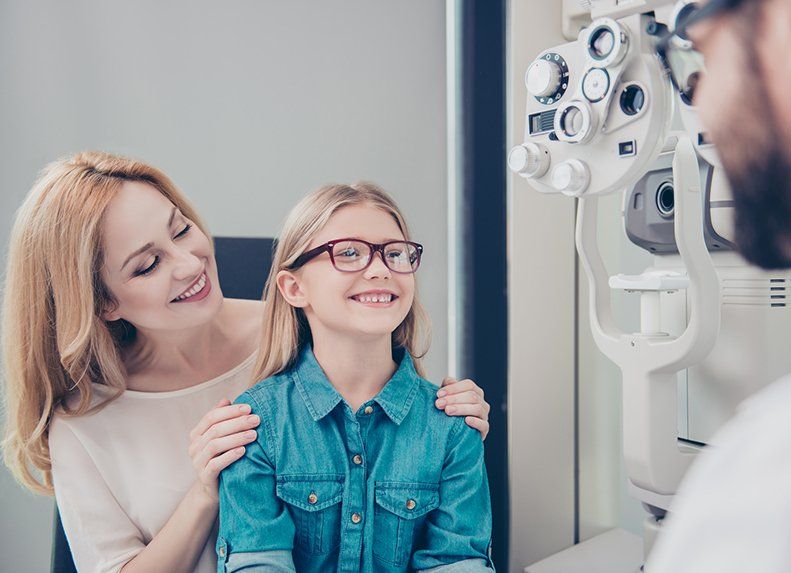Common Eye Conditions
A child may pass a school's vision screening and yet have significant farsightedness, which may cause poor reading ability and decreased near efficiency. In mild cases, a person's eyes may be able to compensate adequately without requiring glasses. The need for glasses is mostly dependent upon how strong an individual's focusing system is and whether a person is having visual symptoms. Sometimes glasses are prescribed to be worn mostly for near tasks.
*NEARSIGHTED (MYOPIA) - This is a condition in which near objects are seen clearly, but distant objects appear blurry. Nearsightedness is very common, affecting nearly 30% of the U.S. population. It normally first occurs in school age children and continues to worsen until around the age of 20. Nearsighted people often squint and have trouble seeing chalkboards, televisions and road signs. These people often complain of eyestrain, headaches and increased blurred vision at night. In some cases, glasses are prescribed to be worn mostly for distance vision.
*ASTIGMATISM - This common condition occurs when the front surface of the eye (cornea) is not round in shape, but instead is shaped irregular or warped similar to a football. This results in vision being blurred at all distances. Symptoms include eyestrain, headaches, blurred vision, double vision, and haloes around lights. Glasses can be worn full time or worn mostly during highly concentrated visual tasks.
*PRESBYOPIA - This vision condition results when the focusing lens of the eye loses its flexibility and therefore the eye gradually loses its ability to focus clearly on near objects. This is a natural part of aging and usually occurs when a person reaches the age of early to mid-forties. Some signs and symptoms of presbyopia include the tendency to hold reading material at arms length, blurred vision at a normal reading distance, eyestrain and headaches when attempting to do close work. Usually bifocals or reading glasses are prescribed. Reading glasses can only be worn for near work, while bifocals can be worn all the time, part-time or mainly for near work.
*AMBLYOPIA (LAZY EYE) - This is a condition of blurred vision resulting from a lack of development of vision in usually one eye that is unrelated to any eye health problems. Vision is not fully restored with corrective lenses. Amblyopia is usually caused by a failure to use both eyes together, either due to one eye not being aligned straight or when there is a large difference in the prescription between the two eyes. This causes the brain to ignore one eye in favor of the other, resulting in poor development of vision in the eye not being used. This abnormality usually occurs before the age of five or six. Treatment of amblyopia includes glasses, contact lenses and vision therapy. In some cases, placing a patch over the good eye to force the use of the weakened eye can help strengthen and improve vision in the amblyopic eye. Surgery may be indicated to help straighten an amblyopic eye that is misaligned. In a lot of cases the amblyopic eye will never see as clearly as the other eye.
*STRABISMUS (CROSSED-EYES) - This is a condition in which the eyes are not properly aligned with each other. For a variety of reasons, one or both eyes turn in, out, up or down. Children under the age of six are the ones most affected by strabismus, but it often first appears between birth and age 21 months. Strabismus can lead to amblyopia (lazy eye) because the brain will ignore one eye to prevent double vision due to both eyes not focusing on the same object. Treatment for strabismus can include glasses (regular or bifocal), prisms, vision therapy and sometimes surgery. Treatment success depends on how early the condition is detected and treated.






